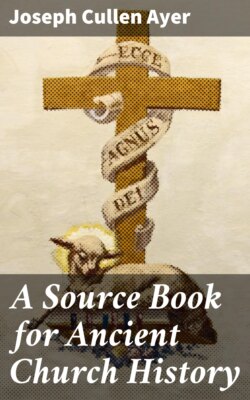Читать книгу A Source Book for Ancient Church History - Joseph Cullen Ayer - Страница 76
На сайте Литреса книга снята с продажи.
Chapter II. The Internal Crisis: The Gnostic And Other Heretical Sects
ОглавлениеTable of Contents
In the second century the Church passed through an internal crisis even more trying than the great persecutions of the following centuries and with results far more momentous. Of the conditions making possible such a crisis the most important was absence in the Church of norms of faith universally acknowledged as binding. Then, again, many had embraced Christianity without grasping the spirit of the new religion. Nearly all interpreted the Christian faith more or less according to their earlier philosophical or religious conceptions; e.g., the apologists within the Church used the philosophical Logos doctrine. In this way arose numerous interpretations of Christian teaching and perversions of that teaching, some not at all in harmony with the generally received tradition. These discordant interpretations or perversions [pg 076] are the heretical movements of the second century. They varied in every degree of departure from the generally accepted Christian tradition. Some, like the earlier Gnostics (§ 21), and even the greater Gnostic systems (§ 22), at least in their esoteric teaching, show that their principal inspiration was other than Christian; others, as the Gnosticism of Marcion (§ 23) and the enthusiastic sect of the Montanists (§ 25), seem to have built largely upon exaggerated Christian tenets, contained, indeed, in the New Testament, but not fully appreciated by the majority of Christians; or still others, as the Encratites (§ 24), laid undue stress upon what was generally recognized as an element of Christian morality.
The principal source materials for the history of Gnosticism and other heresies of this chapter may be found collected and provided with commentary in Hilgenfeld, Ketzergeschichte des Urchristenthums, Leipsic, 1884.
